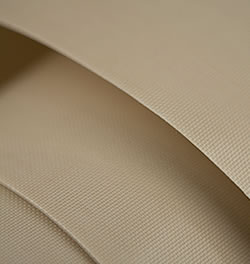What Is Kevlar Used For? Key Industries and Real-World Examples
Understanding what Kevlar is used for reveals its remarkable adaptability across various industries. This synthetic fiber has become integral in applications ranging from protective gear to advanced engineering solutions. Its unique properties enable it to meet the demanding requirements of the military, automotive, aerospace, and construction sectors. By exploring the diverse uses of Kevlar, it becomes possible to appreciate how this material enhances safety, performance, and efficiency.
What is Kevlar?
Kevlar is a synthetic fiber belonging to the aramid family, specifically classified as a para-aramid. Developed in the 1960s, it has become a staple in various high-performance applications. Kevlar’s molecular structure consists of long, rigid polymer chains that are highly oriented and hydrogen-bonded, resulting in a strong and lightweight material.
Kevlar’s Key Properties and Benefits
Understanding the properties of Kevlar helps explain its widespread use across various industries.
- High Tensile Strength: Kevlar’s strength stems from its molecular structure, where strong covalent bonds and hydrogen bonding between chains provide exceptional tensile strength. Making it suitable for applications requiring materials that can withstand high stress without breaking.
- Lightweight: With a density of about 1.44 g/cm³, Kevlar offers a high strength-to-weight ratio. This property is particularly beneficial in aerospace and automotive industries, where reducing weight can lead to improved performance and fuel efficiency.
- Thermal Stability: Kevlar can endure temperatures up to 450°C without significant loss of strength. Its thermal stability makes it ideal for use in environments with high heat exposure, such as firefighting gear and industrial applications.
- Chemical Resistance: Kevlar’s resistance to various chemicals, including acids and bases, ensures its performance in chemically aggressive environments. This property is valuable in industries like chemical processing and oil and gas.
- Durability: Kevlar’s resistance to abrasion and fatigue contributes to its long service life, even under challenging conditions. This durability reduces the need for frequent replacements, offering cost savings over time.

What Is Kevlar Used For?
Kevlar’s unique combination of properties makes it suitable for a wide range of applications across multiple industries. Here are some of the most common:
Military and Law Enforcement
Kevlar is extensively used as personal protective equipment by military and law enforcement personnel. Its high tensile strength and energy-absorbing capabilities make it ideal for ballistic vests and helmets. For example, bullet-resistant vests made from Kevlar layers can absorb and disperse the energy from projectiles, reducing the risk of injury. Helmets reinforced with Kevlar protect against shrapnel and ballistic threats while remaining lightweight for mobility.
Automotive Industry
In the automotive sector, Kevlar is used to enhance the performance and safety of vehicles. Its heat resistance and strength make it suitable for components subjected to high stress and temperatures. Kevlar is incorporated into brake pads to improve heat resistance and reduce wear. It’s also used in reinforcing tires, providing added strength without significantly increasing weight, which contributes to better fuel efficiency.
Aerospace and Aviation
The aerospace industry leverages Kevlar’s lightweight and strong characteristics to improve aircraft performance and safety. Kevlar is used in the construction of aircraft fuselages and wing components to reduce weight while maintaining structural integrity. It’s also employed in protective linings to shield against debris and in components that require resistance to high temperatures.
Construction and Civil Engineering
Kevlar contributes to the construction industry by reinforcing materials and enhancing structural performance. Kevlar fibers are integrated into concrete to increase tensile strength and crack resistance. It’s also used in reinforcing beams and columns, providing additional support without adding excessive weight.
Industrial Applications
In industrial settings, Kevlar is utilized for its durability and resistance to harsh conditions. Kevlar-reinforced conveyor belts are used in manufacturing plants to handle abrasive materials, extending the lifespan of the belts. It’s also found in protective gloves and clothing for workers exposed to high temperatures and sharp objects.
Sports and Recreation
Athletic equipment benefits from Kevlar’s strength and lightness, enhancing performance and safety. This component is used in the construction of high-performance sporting goods like tennis rackets and bicycle tires, providing durability without compromising on weight. It’s also incorporated into protective gear for activities like motorcycling and skiing.
Energy and Utilities
Kevlar’s properties are advantageous in the energy sector, where materials must withstand extreme conditions. For instance, Kevlar is used to reinforce cables in power transmission, offering strength and resistance to environmental factors. It’s also employed in protective clothing for workers in the oil and gas industry, where exposure to heat and chemicals is common.
Medical and Healthcare Fields
In the medical field, Kevlar contributes to the safety and effectiveness of various devices and protective equipment. For example, Kevlar is used in the manufacture of surgical gloves that offer cut resistance and protect medical personnel. It’s also found in orthopedic braces and prosthetics, where its strength and light weight enhance patient comfort and mobility.
Optimize Performance with Smartech’s PTFE Coated Kevlar
Kevlar’s adaptability across industries—from protective gear to industrial components—highlights its role in enhancing safety and efficiency. When combined with PTFE, the resulting material offers a blend of strength, flexibility, and resistance to heat and chemicals, making it suitable for demanding applications.
At Smartech, we provide PTFE Coated Kevlar sheets and transport belts designed to meet the rigorous demands of various industries. Our PTFE Coated Kevlar products are available in multiple thicknesses, catering to specific operational requirements. The combination of Kevlar’s tensile strength and PTFE’s non-stick properties ensures a longer service life and reduced maintenance needs.
Contact us to get expert advice and see how Smartech can collaborate with your project.
Looking for More Information?
Check out our Resources or Contact Us
